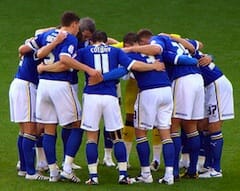It’s great to have a plan. Even better to charge out and begin to execute the plan. But, to keep your plan alive day in and day out, you’ve got to have a routine that holds everyone accountable for all things big and small.

To keep commitment high and reinforce a culture based on your objectives you need to install a systematic approach to meetings that allows people to be heard, get help, pose ideas, participate, learn, grow, move projects forward, and stay connected.
This will include annual, quarterly, monthly, weekly and even daily planned sessions designed to accomplish specific tasks.
I can almost hear some collective groaning coming from my readers, but trust me on this. If you do this right, you’ll wonder how you ever succeeded without it. You may find that more gets done in terms of actual work and real team building in a month using this system than at any time in your business.
First off, have everyone in the organization sketch out their near term plans. The projects they need or intend to get done in the 30, 60, and 90 days based on your overall marketing or business plan. This should be an ongoing moving process and will be one of the tools used in your meeting system.
Daily, weekly, monthly and quarterly
Every organization, depending upon the number of employees and other logistics, will have slightly differing needs, but the basic framework should look something like this:
Quarterly meetings – These meetings should be used to give “state of the business updates” that will likely include financial data and reporting on goals and objectives for the year.
One of the ways that many organizations reinforce core values is to choose a quarterly theme that relates to one of your stated core values and plan activities and initiatives that highlight the chosen value. I’ll go into more detail about this specific tactic in a subsequent chapter on culture.
These meetings should be fun and celebrate achievements, milestones and accomplishments that may fall outside the realm of work.
Monthly meetings – These meetings may include financial and milestone reporting, but should also include teaching.
One of my favorite ways to include teaching in the monthly meeting is to select a member of the staff, regardless of department, and charge them with leading a session about their department or function’s specific initiatives, goals and achievements.
This can be a fun way to “get to know accounting” or “showcase the new advertising campaign.”
Weekly functional meetings – It gets a little trickier once you start breaking meetings down to functional teams or departments. This is where organizations with flat structures (everyone reports to one boss) start to choke. If you’re the boss and you manage everyone in the organization, this tactic will reveal why you can’t continue this practice.
The good news is that this process and the project planning process I wrote about recently are how you start to create a management structure in your organization where perhaps none existed previously.
In fact, many organizations find that the sheer act of planning creates its own logical team organization structure based on who can be and is responsible for projects.
The focus of the weekly meeting is project movement. If you have a very small staff this may be a weekly staff meeting, but the focus is still to get updates on projects. If you have a very organization you may logically conduct these in small groups around projects.
Some mid-sized organizations hold weekly all hands meetings in addition to functional staff meetings in an effort to highlight their most important initiatives.
VML, a digital marketing agency located in Kansas City, holds an all staff meeting every Tuesday morning with the primary purpose of highlighting the organization’s community, non-profit and charitable activities. The brief meeting is also frequently used as a way to recognize staff members who exemplified core values during the coarse of the week.
Daily functional huddle
The concept of the daily huddle has been used in large business for years and has had a huge impact on organizations such as Ritz Carlton, Johnson & Johnson and 3M. Verne Harnish, author of Mastering the Rockefeller Habits did a great deal to popularize the notion in small business circles. Harnish contends that this was one of Rockefeller’s core concepts used while building Standard Oil.
While some may view this tactic purely in terms of efficiency I think it’s one of the greatest ways to build team commitment and spirit and once again reinforce purpose.

